20 Nov 2020 - {{hitsCtrl.values.hits}}
Christians in Sri Lanka Living in harmony amidst challenges after Easter Terrorist Attacks of 2019 and their contribution to society
Sri Lanka has attracted the attention of ancient and modern colonial empires, foreign countries, 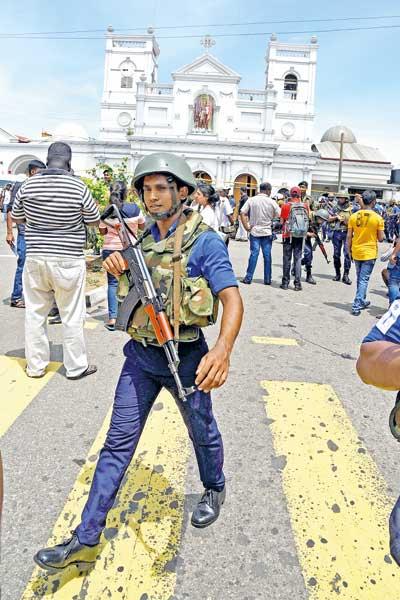 merchants, travellers and missionaries and emissaries over the centuries owing to its strategic and prominent location at a crossroads of maritime routes traversing the Indian Ocean.
merchants, travellers and missionaries and emissaries over the centuries owing to its strategic and prominent location at a crossroads of maritime routes traversing the Indian Ocean.
Sri Lanka’s largest ethnic group is the Sinhalese, constituting 74.9% of the population. The Sri Lankan Tamils, who live predominantly in the North and East of the island, are the largest ethnic minority group at 11.1% of Sri Lanka’s population.
The Sri Lankan Moors are descendants of Muslim traders who migrated from the Arabian Peninsula, Persia and India between the 8th and 19th centuries. They constitute the third largest ethnic group at 9.3% of the population. Indian Tamils comprise 4.1% of Sri Lanka’s population. They are descendants of indented labourers hired during the British rule in the 19th and early 20th centuries to work in the construction of public roads and buildings and the coffee, tea and rubber plantations largely owned by British entrepreneurs.
Smaller minority groups include the Malays, Burghers, Chetties and the Veddahs - Sri Lanka’s primitive indigenous people. Malays are descendants of Malay settlers brought by the Dutch colonial rulers. The Burghers are a Eurasian community of mixed origin, descended from the marriages between European colonists mainly from Portugal, the Netherlands and the UK and natives.
Christianity in the Religious Milieu of Sri Lanka
 The Buddhist missionaries from India during the reign of Emperor Asoka introduced Buddhism to Sri Lanka in the 3rd Century BCE, and it soon became the established religion of the ancient Sinhalese monarchy and the majority Sinhalese people. The Sinhalese majority community is predominantly Theravada Buddhist [93% of the Sinhalese population] and only 7% of the Sinhalese population is Christian.
The Buddhist missionaries from India during the reign of Emperor Asoka introduced Buddhism to Sri Lanka in the 3rd Century BCE, and it soon became the established religion of the ancient Sinhalese monarchy and the majority Sinhalese people. The Sinhalese majority community is predominantly Theravada Buddhist [93% of the Sinhalese population] and only 7% of the Sinhalese population is Christian.
Hinduism has been in existence since at least the 2nd century BCE. The Sri Lankan Tamils are predominantly Hindu [85% of the Sri Lankan Tamil population]. A 15% of the Sri Lankan Tamil population is Christian.
The Indian Tamil population of Sri Lanka is also predominantly Hindu [93% of their population]. Only 7% of their population is Christian.
The Muslim settlers brought Islam to the Island beginning in the 8th Century CE, converting native women upon marriage. Muslims known as Sri Lanka Moors constitute 9.3 % of Sri Lanka’s population [Census of Population and Housing of 2012, Department of Census, Sri Lanka].
The archaeological and historical evidence suggests that a tiny Christian community of St Thomas Christians or Nestorian Christians of Persian origin believed to be a possible foreign expatriate community of merchants and refugees had lived in the ancient city of Anuradhapura in or around 6th Century CE.
"The Portuguese were the first European Christian colonial power to arrive in Sri Lanka in 1505 when Sri Lanka been divided into three native kingdoms, namely Kotte, Kandy and Jaffna"
The Portuguese were the first European Christian colonial power to arrive in Sri Lanka in 1505 when Sri Lanka been divided into three native kingdoms, namely Kotte, Kandy and Jaffna. Their presence in Sri Lanka’s maritime provinces between 1505 and 1656 CE, which began as an interaction of trade and commerce, later developed into a colonial rule in the maritime provinces from 1597 with the acquisition of the Kingdom of Kotte (By way of a gift to the King of Portugal from King Don Joao Dharmapala who had embraced Catholic Faith upon his father’s death) and with the conquest of the Kingdom of Jaffna by wars.
The maritime provinces were ruled by the Dutch East India Company from 1656 to 1796. The British captured the maritime provinces of the Island in 1796. When native feudal Chiefs ceded the sovereignty of the interior native Kandyan Kingdom to the British Empire by the Kandyan Convention of 1815, the whole island came under the British rule. Sri Lanka gained independence from the British in 1948.
King Joao Dharmapala’s father, his predecessor in the throne of Kotte Kingdom, was a great ally of the Portuguese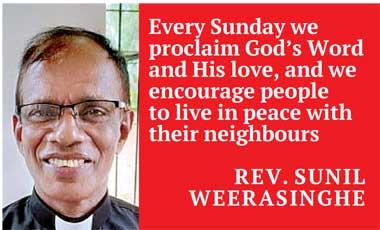 and depended upon the military support of the latter against the onslaughts from his brothers who kings of Seethawaka and Raigama and from the threats of invasion from the neighbouring Muslim King Zamorin of Calicut in India. Although he never embraced Catholic Faith, he invited Franciscan missionaries to come to Sri Lanka and engage in missionary activities and got his son Dharmapala educated by the Franciscan missionaries. During the presence of Portuguese in the maritime provinces of the Island (1505 to 1658), Catholic missionaries actively engaged in the evangelisation of natives. Thousands of native Sinhalese Buddhists and Tamil Hindus embraced the Christian Faith. It was customary for the converts to be given a Portuguese family name upon baptism. On Baptism, the people of higher ranks were conferred the Portuguese honorifics: ‘Don’ for males and ‘Dona’ for females. This explains why many Sinhalese have Portuguese surnames like ‘deSilva’, ‘de Soysa’, ‘de Almeida’, ‘Fernando’, ‘Perera’, ‘de Saa’, ‘de Rosayro’, ‘Peiris’ and ‘Dias’, and the honorifics: ‘Don’ and ‘Dona’ etc. Although these family names among many Sinhalese and some Tamils suggest that at one point of their genealogy, their ancestors, had embraced the Catholic faith. Most of these Sinhalese people with such family names are no longer Catholics but are largely Buddhists while a small are Protestant Christians. This again suggests that at another subsequent point in their pedigree, their ancestors had reverted to Buddhism or embraced the Protestant Christianity.
and depended upon the military support of the latter against the onslaughts from his brothers who kings of Seethawaka and Raigama and from the threats of invasion from the neighbouring Muslim King Zamorin of Calicut in India. Although he never embraced Catholic Faith, he invited Franciscan missionaries to come to Sri Lanka and engage in missionary activities and got his son Dharmapala educated by the Franciscan missionaries. During the presence of Portuguese in the maritime provinces of the Island (1505 to 1658), Catholic missionaries actively engaged in the evangelisation of natives. Thousands of native Sinhalese Buddhists and Tamil Hindus embraced the Christian Faith. It was customary for the converts to be given a Portuguese family name upon baptism. On Baptism, the people of higher ranks were conferred the Portuguese honorifics: ‘Don’ for males and ‘Dona’ for females. This explains why many Sinhalese have Portuguese surnames like ‘deSilva’, ‘de Soysa’, ‘de Almeida’, ‘Fernando’, ‘Perera’, ‘de Saa’, ‘de Rosayro’, ‘Peiris’ and ‘Dias’, and the honorifics: ‘Don’ and ‘Dona’ etc. Although these family names among many Sinhalese and some Tamils suggest that at one point of their genealogy, their ancestors, had embraced the Catholic faith. Most of these Sinhalese people with such family names are no longer Catholics but are largely Buddhists while a small are Protestant Christians. This again suggests that at another subsequent point in their pedigree, their ancestors had reverted to Buddhism or embraced the Protestant Christianity.
"Dutch colonial rule in the maritime provinces of Sri Lanka in 1796, is today one of the tiniest Christian denominations today with a membership of approximately 6000 people"
The maritime provinces of Sri Lanka came under the rule of Dutch East India Company after its armies defeated the Portuguese in a series of battles between 1640 and 1658. The Dutch immediately banned Catholicism in Sri Lanka by laws. Through the brave and zealous endeavours of the Catholic missionaries from Goa, a territory of Portuguese in India, the Catholic Church in Sri Lanka which had become an outlawed underground church, survived and grew amidst persecution during the Dutch occupation. In the last few decades of their rule in the maritime provinces, beginning from the 1750s the Dutch East India Company granted religious freedom to Catholics.
From the beginning of their rule, the British granted religious freedom to all religions. The Catholic Church emerged as the largest Christian church in the Island. During the 19th century, the British permitted the Catholic missionaries (from France, Belgium, Ireland, Italy, and Goa), Anglican, Methodist, Baptist and The Salvation Army 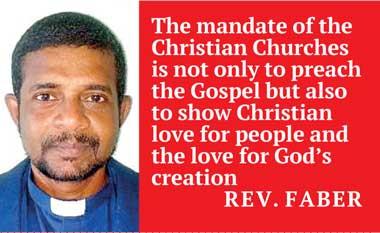 missionaries (from the British Isles) and Congregationalist missionaries (from the US) come to Sri Lanka to engage in missionary activities such as establishing congregations, schools and charitable institutions. These missionaries established congregations, their respective networks of schools and charitable institutions throughout the Island. During the early British period, the American missionaries from the Congregationalist churches who arrived in Sri Lanka and established churches, schools, the Island’s first western medical school in 1851, and medical missions in the Northern Province. In the early 20th century, when Sri Lanka was still a colony of the British, missionaries from the American Pentecostal churches introduced their brand of Christianity to the Island.
missionaries (from the British Isles) and Congregationalist missionaries (from the US) come to Sri Lanka to engage in missionary activities such as establishing congregations, schools and charitable institutions. These missionaries established congregations, their respective networks of schools and charitable institutions throughout the Island. During the early British period, the American missionaries from the Congregationalist churches who arrived in Sri Lanka and established churches, schools, the Island’s first western medical school in 1851, and medical missions in the Northern Province. In the early 20th century, when Sri Lanka was still a colony of the British, missionaries from the American Pentecostal churches introduced their brand of Christianity to the Island.
According to the Census of 2012, a 70.2% of Sri Lankans were Theravada Buddhists, 12.6% were Hindus, 9.7% were Muslims (mainly Sunni), 7.4 Christians [Catholic 6.1%, other Christians 1.3 %] and 0.05% others.
Christians in today’s Sri Lankan society
To present a kaleidoscopic picture of today’s Christian community in Sri Lanka and the issues and challenges they face, I interviewed three pastors and four laypersons of four different Christian denominations in Sri Lanka, and visually impaired Buddhist lawyer for this article.
Voices of Pastors
On one Sunday morning when the sun was shining bright, I stepped into the Methodist Chapel at Kalutara, a town (predominantly Buddhist) situated in the western coast of Sri Lanka 42 km south of Colombo. The Sunday worship service was in progress. Methodist Church of Sri Lanka was founded by the early British Methodist Missionaries who arrived in the Island in 1814. It was these first missionaries who had established the Methodist congregation at Kalutara in 1814. Methodist Church of Sri Lanka today has approximately 25,000 members throughout the Island. Methodist congregation of Kalutara currently has a membership of 90 people consisting of Sinhalese and a few Tamils.
After the service, I spoke to the Methodist Minister in charge of this congregation, Rev. Sunil Weerasinghe (60). Rev. Weerasinghe said, “every Sunday we proclaim God’s Word and His love, and we encourage people to live in peace with their neighbours. Most people in our congregation are low-income earners. There are only a few middle-class families. In the past, our church helped people find work or start their own small businesses. After all, it is better to teach someone to fish than to give him fish”. Rev. Weerasinghe laments: “Methodist Church of Sri Lanka nowadays has no funds for such self-employment projects.”
"In terms of political involvement, the Catholic Church in Sri Lanka does not get involved in party politics but raises her voice and concern when the occasion demands justice and reasonableness in the political and social context"
In the evening of that Sunday, I met Rev.Shirley Faber (61), President of the Christian Reformed Church of Sri Lanka (formerly known as the Dutch Reformed Church in Sri Lanka) at his residence in Dehiwala, a suburb of Colombo. It is the oldest Protestant denomination in the Island founded by the Dutch East India Company in 1642. 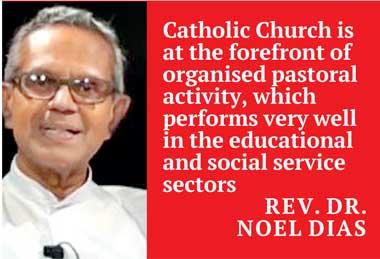 The Christian Reformed Church which had around 200,000 members by the end of the Dutch colonial rule in the maritime provinces of Sri Lanka in 1796, is one of the tiniest Christian denominations today with a membership of approximately 6000 people. Speaking of ecological and social concerns, Rev. Faber said: “ The mandate of the Christian Churches is not only to preach the Gospel but also to show Christian love for people and the love for God’s creation. God created the world and handed over the control of His beautiful creation to human beings. We ought to know that we are only the stewards of His creation. As stewards of His creation, we should display good stewardship. We are accountable to God as to how we utilise the resources in His creation. The Churches should show its concern for ecological and social issues. In our society, wealth and resources are unfairly distributed. During the Covid-19 crisis, our church helped both Christians and non-Christians. We should show our love for people regardless of their religion not with the motive of converting them to Christian faith.”
The Christian Reformed Church which had around 200,000 members by the end of the Dutch colonial rule in the maritime provinces of Sri Lanka in 1796, is one of the tiniest Christian denominations today with a membership of approximately 6000 people. Speaking of ecological and social concerns, Rev. Faber said: “ The mandate of the Christian Churches is not only to preach the Gospel but also to show Christian love for people and the love for God’s creation. God created the world and handed over the control of His beautiful creation to human beings. We ought to know that we are only the stewards of His creation. As stewards of His creation, we should display good stewardship. We are accountable to God as to how we utilise the resources in His creation. The Churches should show its concern for ecological and social issues. In our society, wealth and resources are unfairly distributed. During the Covid-19 crisis, our church helped both Christians and non-Christians. We should show our love for people regardless of their religion not with the motive of converting them to Christian faith.”
As for the theological challenges, Rev. Faber is of the view that some charismatic Pentecostal churches which promote and propagate the ‘new theology of prosperity’ (health and wealth), poses a challenge in that they entice the less informed members of mainline Christian churches to join them by their controversial teachings.
Easter Sunday Attacks: Seeking Justice
On 21 April 2019, Easter Sunday, three churches (two Catholic and one Evangelical Pentecostal) and three luxury hotels in Sri Lanka, Colombo, were attacked in a series of terrorist suicide bombings launched by a local Islamic extremist terrorist group which had embraced the ideology of ISIS. A total of 267 people were killed including at least 45 foreign nationals and eight bombers, and at least 600 were injured. Among those who were killed and injured, there were many children and women. The church bombings were carried out during Easter worship services in St. Sebastian’s Church, Katuwapitiya in Negombo, St. Anthony’s Church in Colombo and Zion Pentecostal Church in Batticaloa.
Out of the 267 people killed and 600 injured, about 221 killed and an overwhelming majority of the injured were Christians attending Easter Services in the three churches.
“The impact of the attacks is still noticeable. Christians seek justice for the victims and their next of kin, “says Rev. Dr. Noel Dias, a Catholic priest, a former Senior Lecturer in Public International Law at the University of Colombo and an Attorney-at-Law, who resides at the Archbishops’ House of Colombo.
Rev.Dr. Noel Dias remarked: “The leadership of the Catholic Church played a decisive role in containing the 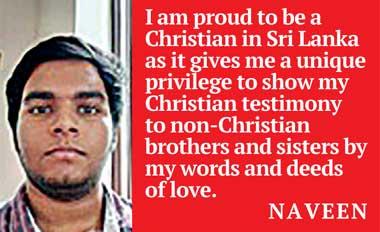 probable escalation of retaliatory violence against the Muslim community by appealing to her faithful not to retaliate but to forgive the attackers in a true Christian spirit. The Easter terror attacks have left a lasting impact on Christians. They are still seeking justice for the victims and their families.” These concerns are echoed every day by the Christians and other people in Sri Lanka and abroad. Mr Mike Pompeo, US State Secretary who was on an official visit to Sri Lanka on the 27th and 28th October, did not forget to place a wreath at St. Anthony’s Church in Colombo on 28th October 2020. In his Twitter, Pompeo said: “Today, I laid a wreath at the shrine of St. Anthony, one of the sites of the 2019 Easter Attacks which killed and injured hundreds of innocent people. We stand with the Sri Lankan people and the world to defeat violent extremism and bring perpetrators to justice.”
probable escalation of retaliatory violence against the Muslim community by appealing to her faithful not to retaliate but to forgive the attackers in a true Christian spirit. The Easter terror attacks have left a lasting impact on Christians. They are still seeking justice for the victims and their families.” These concerns are echoed every day by the Christians and other people in Sri Lanka and abroad. Mr Mike Pompeo, US State Secretary who was on an official visit to Sri Lanka on the 27th and 28th October, did not forget to place a wreath at St. Anthony’s Church in Colombo on 28th October 2020. In his Twitter, Pompeo said: “Today, I laid a wreath at the shrine of St. Anthony, one of the sites of the 2019 Easter Attacks which killed and injured hundreds of innocent people. We stand with the Sri Lankan people and the world to defeat violent extremism and bring perpetrators to justice.”
"The police had been investigating the activities of this local extremist Islamic terrorist group for many months before the Easter terror attacks"
The police had been investigating the activities of this local extremist Islamic terrorist group for many months before the Easter terror attacks. There were warrants for the arrest of three of the suicide bombers issued
by a Magistrate’s Court in connection with vandalising Buddha statues in a provincial town several months prior to the Easter Terror Attacks. There are some questions that remain to be answered. The most important of them all is: Why didn’t Sri Lanka’s authorities and officials in charge of national security who had repeatedly received prior foreign intelligence reports about these terror attacks with details of the suicide bombers during the two weeks prior to the attacks, take appropriate action to arrest the suicide bombers and prevent them?
The investigations including a concluded Parliamentary Select Committee inquiry and an on-going Presidential Commission Inquiry have not yet conclusively answered these questions even after one and a half years. Suspected perpetrators have so far not been indicted in the High Court for trial in connection with the Easter Terrorist Attacks.
As for the spiritual challenges posed by the Easter Attacks, Rev. Dr. Noel Dias said: “The martyrdom is the seed of the Church. These challenges remind us of what C. S. Lewis once said: ‘Pain insists upon being attended to. God whispers to us in our pleasures, speaks in our consciences, but shouts in our pains. It is his megaphone to rouse a deaf world.’
Speaking of the role of the Catholic Church in pastoral care, Rev. Dr. Dias opined: “Catholic Church is at the forefront of organised pastoral activity, which performs very well in the educational and social service sectors. There is a great need for pastoral care in terms of building a rapport between the clergy and the laity. In terms of political involvement, the Catholic Church in Sri Lanka does not get involved in party politics but raises her voice and concern when the occasion demands justice and reasonableness in the political and social context. In the perspective in theology, the church should refrain from being elitist. External pomp, over-emphasis of material structures must be moderated. There is a greater need in this direction. In terms of fostering family relationships, the Catholic Church is better organised than the other religious denominations. However, there is still an urgent need to address issues like pornography, drug and alcohol addiction etc.”
Voices of the lay Christians
Aruna Silva (50), a father of six children, who earns his livelihood as a three-wheeler taxi driver and a painter of motor vehicles said: “ I was born and bred a Methodist. I moved to this area in 1995 and joined this congregation. 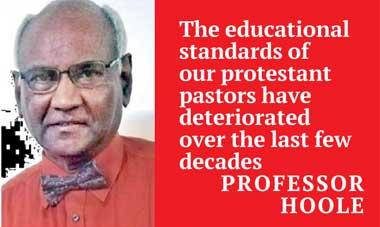 There is religious freedom in the country. There were a few occasional isolated incidents of religious violence against Christian churches by a few extremist groups.” Aruna opined: “I believe that the persuasive and aggressive forms of evangelism used by some evangelical Pentecostal churches disregarding sensitivities of other religions, at times though not always, may have provoked the extremist elements to attack Christian places of worship in some rural areas”.
There is religious freedom in the country. There were a few occasional isolated incidents of religious violence against Christian churches by a few extremist groups.” Aruna opined: “I believe that the persuasive and aggressive forms of evangelism used by some evangelical Pentecostal churches disregarding sensitivities of other religions, at times though not always, may have provoked the extremist elements to attack Christian places of worship in some rural areas”.
Naveen, a 20-year-old young undergraduate student in Information Technology who is a member of this Methodist congregation at Kalutara said: ‘‘I am proud to be a Christian in Sri Lanka as it gives me a unique privilege to show my Christian testimony to non-Christian brothers and sisters by my words and deeds of love. Our good deeds would speak louder than our words. In order to help the poor people to improve their economic conditions, the church should first identify their skills and help them earn an income in the areas they are so skilled”
Janice Benjamin (32) is a young educated Catholic mother of five children, housewife and an active member of the Catholic movement known as “Neo-catecumenal Way” founded by Kiko Argüello, a Spanish artist and Carmen Hernández in 1964. She lives in Colombo and is a member of St. Lawrence’s Church there. Janice strongly believes that “Satan is waging his final war against the family”. Says Janice, ”I personally see how it is absolutely true in the context of the Church here. Many Catholics, I believe, are not given proper and adequate instructions on the Catholic Church and its history, its rich teachings, and as such it is very obvious to see the prevalence of many attacks on the family. The Neo-catecumenal Way is a tiny minority within the Catholic Church. In the Neo-catechumenal Way, we are given a lot of insight into the teachings of the church and the Bible, particularly on marriage, family, children, contraception, abortion, and homosexuality. It is very sad to see only a minority in the church practice the official teaching of the Church on these issues. Many would go with the tide and agree with the modernist views of society. Sadly, many of my friends say that unless the Church adapts to modern trends, it will lose its members.”
The Neo-catecumenal Way of which Janice is a member promotes the idea of having children as many as possible. Says Janice: As a young mother of five children, I would say that it is definitely a challenge for me to raise my five kids in a society which considers having more than one or two children is old fashioned and stupid. There are struggles economically, and physically and it is draining our energy and resources. But in the midst of all these, I see the love of God resonates in my family of five children who are a blessing from God.”
Speaking of the most important reform needed in the Catholic Church, Janice opined: “In my opinion, the Catholic Church in Sri Lanka has to be more vocal in its teachings. The Church should do more to inculcate the rich traditions and values in her faithful, younger generations and children. The teachings of the church and the Bible should be slowly introduced to the children not in a moralistic and legalistic sense but in a way of showing them that this is how the Love of God is reflected.”
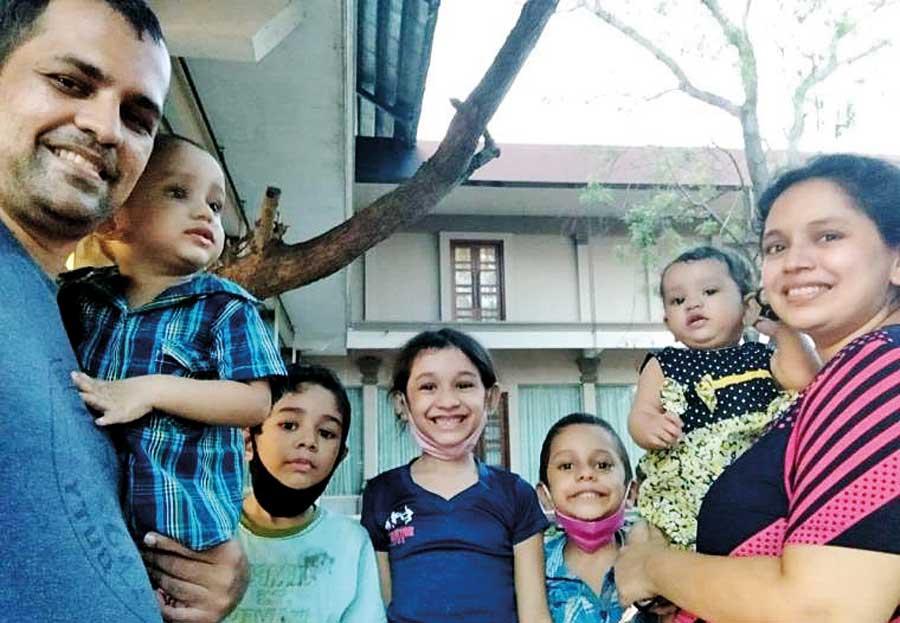
Professor Rathnajeevan Hoole (68) is a member of the Anglican Church in Sri Lanka. He belongs to the congregation of St. James’ Church in Nallur, Jaffna, his native place in the Northern province of Sri Lanka chiefly inhabited by Sri Lankan Tamils. Professor Hoole is a former Senior Professor of Electrical Engineering at the University of Peradeniya and The State University of Michigan. He is well known for his role as one of the three members of Sri Lanka’s Election Commission. Professor Hoole’s father was an Anglican clergyman. Professor Hoole has served as a member of the Diocesan Council of the Colombo Diocese of the Anglican Church in Sri Lanka for several years.
When interviewed by me, Professor Hoole expressed his concerns about the general level of education prevalent 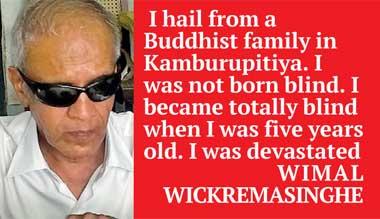 among the pastors in the Anglican Church of Sri Lanka and other non-Catholic churches. Said Professor Hoole: “The educational standards of our protestant pastors have deteriorated over the last few decades. Pastors of non-Catholic mainline churches (except the pastors of Christian Reformed Church) are trained at Pilimatalawa Theological College where liberal theology is taught, while the pastors of evangelical free churches and Christian Reformed Church receive their theological education from evangelical/Pentecostal seminaries. The most important reform required is to groom educated Protestant pastors. Many Anglicans and other non-Catholic Christians seem against or ignorant of the creeds and Catholic side of our faith. The free churches even think the Lord’s Prayer is Roman Catholic. So unsatisfactory is our theological education. They think transference from Roman Catholicism is conversion. Most of the educated Jaffna Tamil Christians left Sri Lanka and settled down in the western countries during the last six decades due to the ethnic tensions and a 30-year Civil War that ended in 2009”.
among the pastors in the Anglican Church of Sri Lanka and other non-Catholic churches. Said Professor Hoole: “The educational standards of our protestant pastors have deteriorated over the last few decades. Pastors of non-Catholic mainline churches (except the pastors of Christian Reformed Church) are trained at Pilimatalawa Theological College where liberal theology is taught, while the pastors of evangelical free churches and Christian Reformed Church receive their theological education from evangelical/Pentecostal seminaries. The most important reform required is to groom educated Protestant pastors. Many Anglicans and other non-Catholic Christians seem against or ignorant of the creeds and Catholic side of our faith. The free churches even think the Lord’s Prayer is Roman Catholic. So unsatisfactory is our theological education. They think transference from Roman Catholicism is conversion. Most of the educated Jaffna Tamil Christians left Sri Lanka and settled down in the western countries during the last six decades due to the ethnic tensions and a 30-year Civil War that ended in 2009”.
The Catholic Church in Sri Lanka and worldwide maintains very high and uniform educational standards for its clergy. In order to become a Catholic priest, a seminarian should first read for a Bachelor of Philosophy degree awarded by Gregorian University or the Urban University of Rome in English medium after his General Certificate of Education (Advanced Level) - Sri Lanka’s matriculation examination. In addition to this, a seminarian is required to read for the second degree of Bachelor of Theology awarded by one of these two universities. These degrees are recognised by the university grants Commission of Sri Lanka and universities throughout the world.
Christian contributions to social development
Amidst all the challenges, the contributions of Christianity to the social and moral development of Sri Lankan society in some aspects remain highly significant. The most significant and prominent among such legacies is the formal educational system of primary and secondary schools in Sri Lanka. It is a lasting legacy of Christian missionaries. The missionaries of mainline Christian denominations (Catholic and non-Catholic) were responsible for introducing a formal modern educational system by establishing their respective networks of schools throughout the island increasing the literacy of the people. The non-Christians were the largest beneficiaries of the Christian missionary school system. The leaders of Buddhist, Hindu and Muslim communities who had received their education from the Christian missionary schools later established Buddhist, Hindu and Muslim school networks on the lines of the Christian missionary school model in the last quarter of the 19th century and the first half of the 20th century. The British Colonial Government provided financial aid to both Christian and non-Christian school networks. The Christian missionary school networks served as the models for both State and non-Christian schools. The Catholic and Protestant Churches were the pioneers in establishing Reformatories for juvenile offenders, Schools for the Blind and Deaf, children’s homes, elders’ s homes, hospitals and industrial schools for young persons etc.
Wimal Wickremasinghe (68) is a visually impaired lawyer and a Buddhist. Said Wimal: “ I hail from a Buddhist family in Kamburupitiya. I was not born blind. I became totally blind when I was five years old. I was devastated. My mother took me to a Buddhist priest in the village temple. The priest told me: ‘ Child, you had done a grave crime in your previous birth and you are paying your punishment or Karma for that crime. It was too much for me a 5-year-old child to grasp and bear. The priest offered no solution or hope for me. At that time my father had left my mother. We were destitute. One of my mother’s cousins who was a teacher had heard about the School for the Blind and Deaf run by the Anglican Church. He suggested that my mother take me to the School for the Blind and Deaf at Ratmalana. My mother took me to the School for the Deaf and Blind. This School established by a female Anglican missionary named Miss Mary Chapman and it was the first school for the deaf and blind in Sri Lanka. I was immediately admitted as a boarder to this school. There, I learnt Braille and studied up to Grade 11 Class.
I passed the General Certificate of Education (Ordinary Level ) Examination with very good results and was awarded a full scholarship to study for my General Certificate of Education (Advanced Level ) Examination at S. Thomas’ College, Mt. Lavinia as a boarder. I passed the GCE (Advanced Level Examination with good results and gained admission to the Faculty of Law at the University of Colombo from which I obtained my Bachelor of Laws degree and became a lawyer in 1981. At the School for the Blind and at S. Thomas’ College, Mt.Lavinia, I experienced the love of Christians and they transformed my life. I was never forced to become a Christian at the School for the Blind or at S. Thomas’ College. My two sons too received their education at S. Thomas’ College, Mt.Lavinia. My sons and I are still Buddhists. I owe a great debt of gratitude to Christians for the light they brought into my life. After I became a lawyer in 1981, I applied for a number of public sector jobs in Sri Lanka. I was interviewed for these jobs but was not given employment because I was blind. But in Great Britain a country with a long history and tradition of Christianity, they appointed a blind man, Sir David Blunkett as Minister of Education. In Sri Lanka, there is no adequate social security for visually impaired people. A majority of them are very poor and destitute”.
The Christian missionaries were the pioneers in providing education for girls.
In 1961, a Government led by Mrs. Sirimavo Bandaranaike by an Act of Parliament took over denominational private schools and private teacher training colleges assisted by State subsidies. An overwhelming majority of these schools were run by the Catholic and Protestant churches. Only 52 Christian schools out of thousands of Christian schools which opted to remain independent were denied state subsidies making them undergo difficulties. In 1977, a United National Party Government that was elected decided to grant financial subsidies to these schools only to pay staff salaries.
In the pre-colonial feudal Sri Lanka, ordinary women of lower classes were not permitted to wear jackets to cover their breasts. It was because of the influence of the Christian missionaries and Christian colonial rulers, this situation changed and ordinary women were required to wear jackets and blouses. The concept of monogamous marriage was introduced to Sri Lanka by Christian colonial rulers and missionaries. It is now a well-accepted and entrenched concept among the Buddhists and Hindus. Christian influence can also be seen in wedding ceremonies and funerals and in other moral and social aspects too.
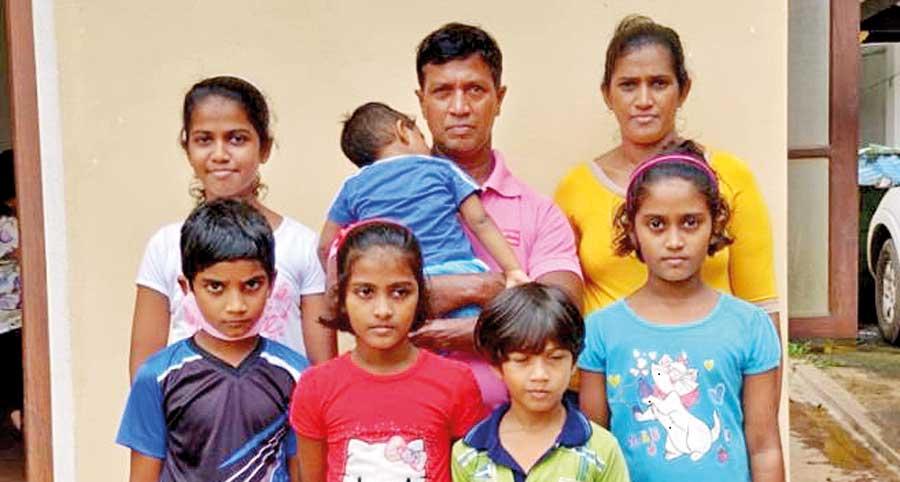
27 Nov 2024 32 minute ago
27 Nov 2024 41 minute ago
27 Nov 2024 1 hours ago
27 Nov 2024 1 hours ago
27 Nov 2024 2 hours ago